Watching live theatre, music and dance at home is becoming a whole lot better
Digital presentations of the arts rose out of necessity but are now an increasingly viable alternative to in-theatre performances.
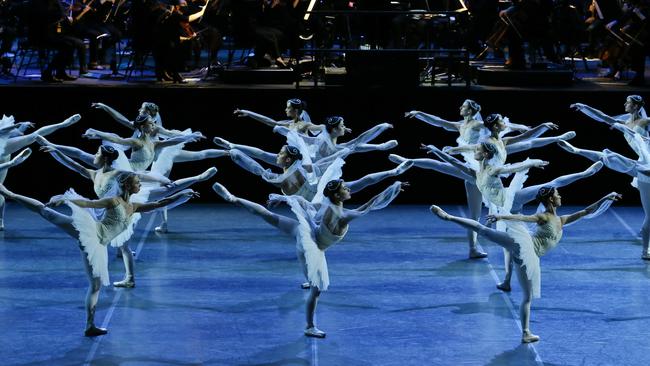
On March 17 last year, just as the nation was going into lockdown, classical music producers Chris Howlett and Adele Schonhardt were on the phone, wondering what they could do to help out-of-work musicians. Ten days later they launched the Melbourne Digital Concert Hall, an online platform for live-streamed concerts by soloists and small ensembles, filmed at Melbourne’s Athenaeum Theatre.
Live streaming quickly became the flavour of the COVID year as musicians and other artists switched over to digital channels to maintain a connection with their audiences. Just as quickly, doubts started to arise about the viability of live streaming — not least the uneven quality of some homebaked productions and whether a dollar could be made from them.
With MDCH, Howlett and Schonhardt set out their shingle from the first concert, featuring wind ensemble Arcadia Winds. In their social enterprise model, “tickets” for each live-streamed concert are $24, of which $20 is returned to the musicians.
As the MDCH marks its first anniversary, Howlett and Schonhardt have produced 280 concerts and distributed about $1m to the participating artists.
“The audience has come on board with that model like you wouldn’t believe because they know they are supporting musicians who they love,” Schonhardt says. “We have a model that puts the artists at the heart of the equation: that’s incredibly important to us. We wanted to make sure that they were looked after first.”
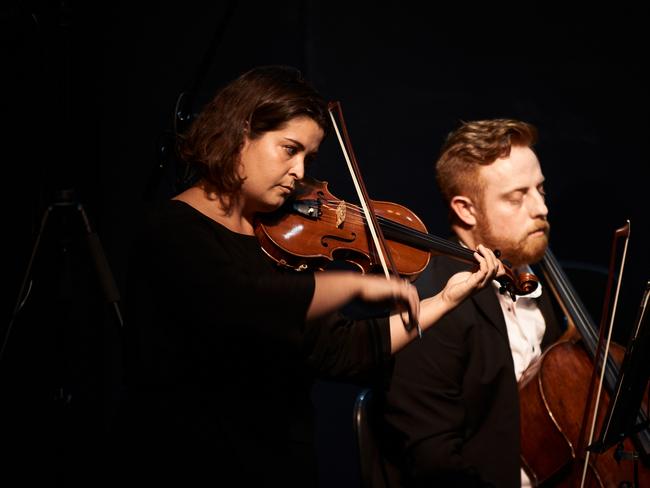
Other artists and organisations have embraced digital presentation since the pandemic started and various models have evolved. No longer merely a COVID-era necessity, digital increasingly is seen as a viable alternative to in-theatre performances, whether the audience is in the city, the bush or overseas. And just as organisers now charge a fee for digital access rather than give away their performances, the production values have risen accordingly.
Last week the Australian Chamber Orchestra launched the second of its StudioCast series, called Bach and the Beyond. The StudioCasts are not live streams of concerts but specially made concert films with high-quality vision and sound.
Bach and the Beyond opens with the Ricercar a 6 from The Musical Offering — the strange chromatic theme being spelled out, in Richard Tognetti’s arrangement, by individual players in the ACO.
The film’s director, Matisse Ruby, and director of photography, Tyson Perkins, have interpreted the opening statement as a sequence of solo shots of each musician. (Flute player Emmanuel Pahud filmed his part separately in Berlin.) Adding to the drama is the decision to film in black and white, with tube lighting giving flashes of illumination and high contrast.
Part of the challenge, Ruby says, was that the orchestra was being filmed in the relatively plain setting of a recording studio, unlike the previous StudioCast, which was filmed in the grand interior of Sydney Town Hall.
“It was a way of creating uniformity in the space, and we also wanted it to feel a bit rock ’n’ roll, like a recording session,” she says.
The StudioCasts are expensive to produce compared with filming a live-streamed concert. ACO managing director Richard Evans says each program can cost from $60,000 to $100,000. The orchestra is not making the films available for free: a seven-day pass for a single film is $35, or the season of eight films for $229.
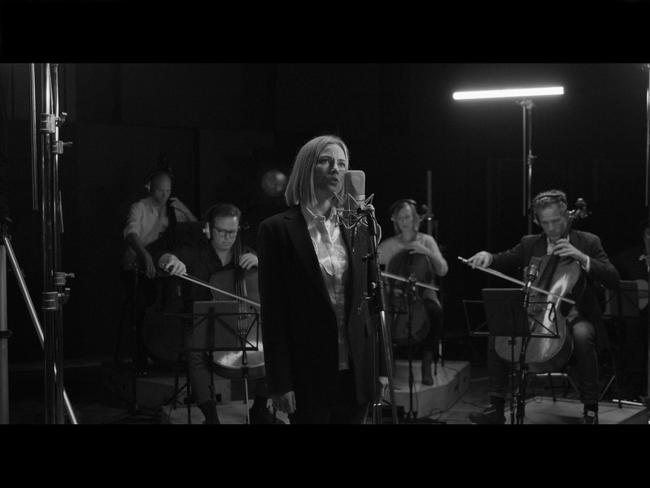
Those who already have a subscription to ACO concerts can add the digital package for $149. About 20 per cent of ACO concert subscribers have taken up the StudioCasts package, Evans says.
The ACO has long been ahead of the curve in exploring different media for its music, from its early take-up of Spotify to made-for-cinema films such as The Mountain, and an interactive installation called ACO Virtual that featured avatars of the musicians. When the pandemic hit, and the ACO couldn’t be sure when it would be touring again, it brought forward its plans for digital presentations.
“We had always planned to do a digital season of some description, largely to give access to those people who couldn’t come to the hall,” Evans says. “It also recognises that the ACO has markets in London, in Japan and New York. We exist in a global industry, and we thought it was important to have a global offering.”
As people have become familiar with the experience of watching concerts and other performances on digital devices, he adds, it was important that the ACO continue to meet its audience’s high expectations of quality.
“The world is awash with people recording live performances,” Evans says. “Coming to an ACO performance is such a visceral experience, and we really wanted to capture that intimacy and immediacy, and the sense of musical attack. We wanted to be able to translate that into a different medium. It’s expensive and ambitious, and something that has some cut-through in the market.”
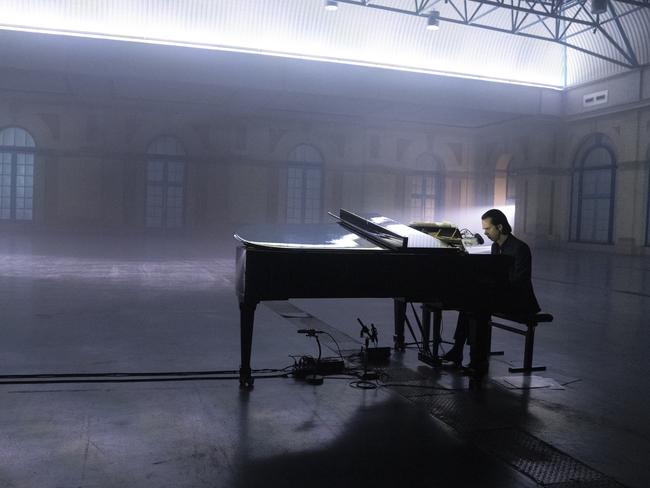
In many cases, digital programs are possible because contractual arrangements are in place or have been negotiated with a company’s full-time ensemble of artists. The Australian Ballet came to an agreement with its dancers for its inaugural Live on Ballet TV program, Summertime at the Ballet, filmed at Margaret Court Arena in Melbourne in February. The performance was available for online viewing for $25, and the AB wants to continue live streaming other performances this year.
The Australian Brandenburg Orchestra has launched its Brandenburg One channel, which for $185 gives unlimited views of filmed performances of the orchestra’s six subscription concerts. The Melbourne and Sydney symphony orchestras have made filmed performances available to view free their websites.
Contemporary musicians, including Nick Cave and Kylie Minogue, produced online concert films during the lockdown. Cave’s Idiot Prayer, filmed at Alexandra Palace in London, and Minogue’s Infinite Disco originally were one-off, pay-per-view events but both have been repeated and Cave’s film was released in cinemas.
Live streaming is more difficult for theatre companies, which engage actors and creative teams for each new production, and this helps explain why so few plays are live streamed compared with music performances.
Sue Donnelly, now executive director of Sydney’s Belvoir, says she prepared a report on digital presentation about a decade ago for the former Australian Major Performing Arts Group. At that time, she says, the Media, Entertainment and Arts Alliance resisted live streaming and made it “prohibitively expensive” out of fears it would diminish the audience for live theatre. Partly because of this, Australia missed the boat on live streaming, and Britain and the US have become market leaders through channels such as NT Live from Britain’s National Theatre and the Met Live in HD series from the Metropolitan Opera in New York.
“Many people think that digital streaming will make money but in Australia, without subsidy, it’s not viable,” Donnelly says. “NT Live and the Met make money because of their global domination.”

Some theatre companies, however, have made inroads with live streaming. Mid-pandemic, Sydney’s Red Line Productions presented Will Eno’s monologue Thom Pain (Based on Nothing), featuring Toby Schmitz in a specially filmed live performance.
Major companies are coming on board. Sydney-based outfit Australian Theatre Live, which has filmed productions from Griffin, Sydney Theatre Company and the Malthouse, has entered an agreement with Queensland Theatre to present three digital presentations this year, including The Taming of the Shrew.
“Most of the theatre companies now recognise they need to have a digital contribution, whereas in the past they weren’t interested,” ATLive co-founder Peter Hiscock says. “COVID has focused everyone’s attention on what’s available.”
The Adelaide Festival, in response to border closures that curtailed the ability to include international artists in its program, instead embraced live streaming — but with a twist. Its Live From Europe series of four programs — including Berlin-based pianist Igor Levit and Simon Stone’s production of Medea from Internationaal Theater Amsterdam — was transmitted to a live audience at Her Majesty’s Theatre, while the performers also could see and hear the audience in far-off Adelaide.
The Adelaide Festival’s Rachel Healy says she and co-artistic director Neil Armfield wanted to offer audiences a unique festival experience, not yet another live-streamed performance.
The two-way feedback loop between performers and audience wasn’t as seamless as Healy would have liked but audiences responded positively to the experience.
Most successful, she says, was the live stream of Medea from Amsterdam because of the quality of the videography and the close-ups it gave of the actors. Less successful was the dance program BLKDOG by London-based choreographer Botis Seva, possibly because audiences missed the kinetic energy of dancers dancing in a theatre.
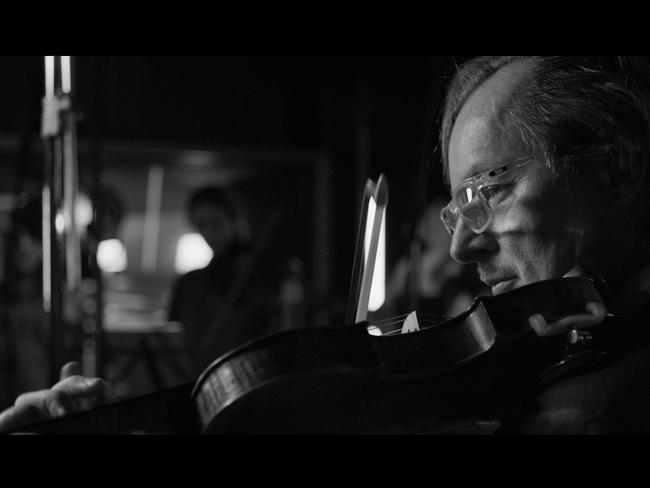
“I think there’s something about dance — the sweat, the smell, the thud on the sprung floor, their sheer physical presence,” Healy says. “People said (of Seva’s company), ‘You have to get them here physically,’ whereas Medea was such a rewarding experience in its own right. I think the art form inspires different responses.”
The Melbourne Digital Concert Hall, born in a crisis, has gone from strength to strength since its first live stream last March. The project was supported at the outset by the Athenaeum Theatre’s Greg Hocking, by Kawai Australia, which lent a concert grand piano, and by Melbourne-based live-stream services company 5stream.
Philanthropic support and a federal government RISE grant help cover other expenses.
Schonhardt says she and Howlett are planning to present 300 concerts through MDCH this year, though the initial crisis of the lockdown has passed. They offer a hybrid model where concert-goers have the option of attending in person or watching online.
Schonhardt says customer surveys have shown that one in four people don’t attend live concerts because of distance, health concerns or other reasons. “There’s an audience out there who I think we have an obligation to serve,” she says. “It’s really about accessibility for them. We receive the most incredibly moving messages of support from people, saying, ‘Please keep it going.’ ”



To join the conversation, please log in. Don't have an account? Register
Join the conversation, you are commenting as Logout